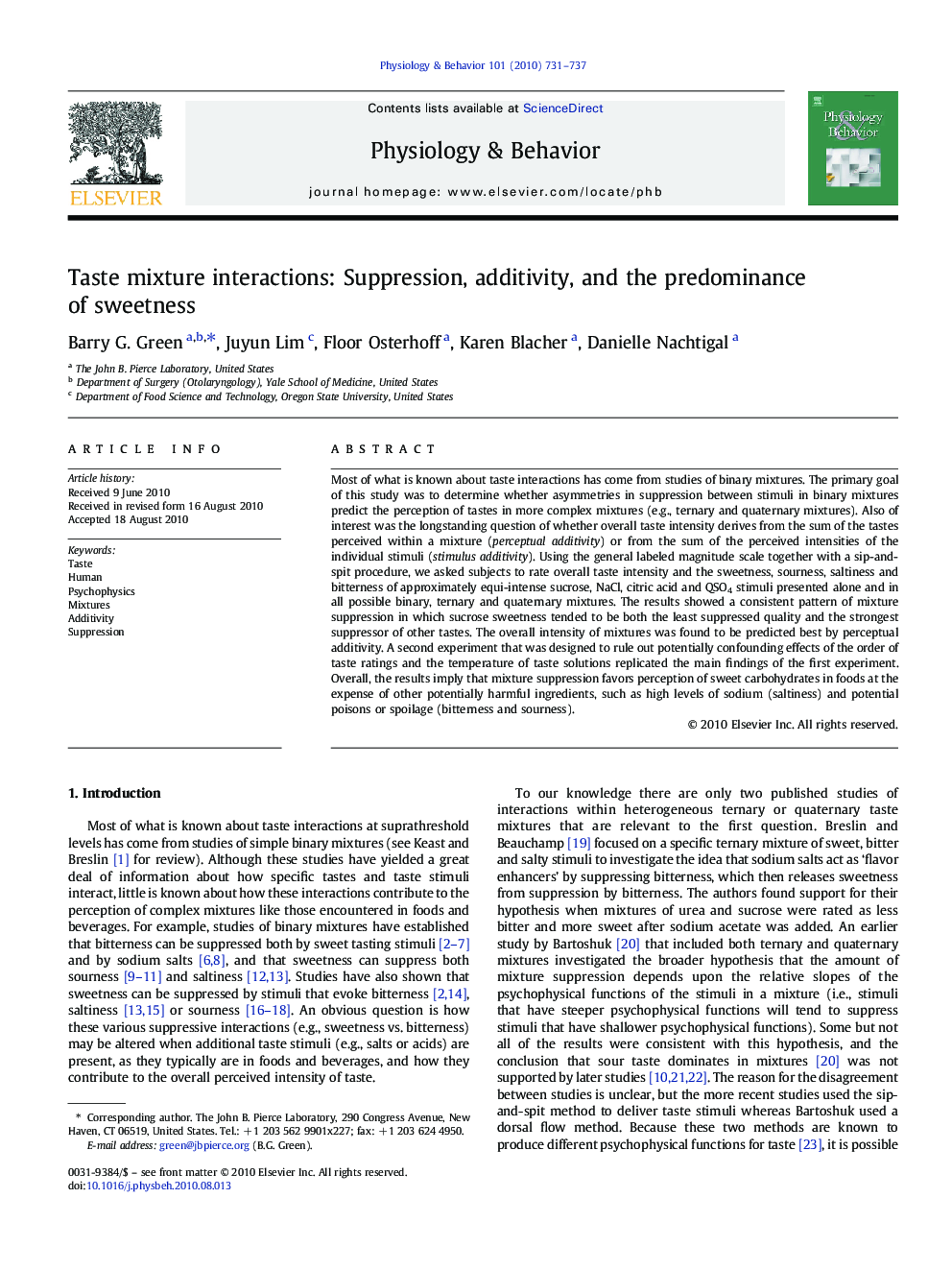| کد مقاله | کد نشریه | سال انتشار | مقاله انگلیسی | نسخه تمام متن |
|---|---|---|---|---|
| 2844818 | 1166365 | 2010 | 7 صفحه PDF | دانلود رایگان |

Most of what is known about taste interactions has come from studies of binary mixtures. The primary goal of this study was to determine whether asymmetries in suppression between stimuli in binary mixtures predict the perception of tastes in more complex mixtures (e.g., ternary and quaternary mixtures). Also of interest was the longstanding question of whether overall taste intensity derives from the sum of the tastes perceived within a mixture (perceptual additivity) or from the sum of the perceived intensities of the individual stimuli (stimulus additivity). Using the general labeled magnitude scale together with a sip-and-spit procedure, we asked subjects to rate overall taste intensity and the sweetness, sourness, saltiness and bitterness of approximately equi-intense sucrose, NaCl, citric acid and QSO4 stimuli presented alone and in all possible binary, ternary and quaternary mixtures. The results showed a consistent pattern of mixture suppression in which sucrose sweetness tended to be both the least suppressed quality and the strongest suppressor of other tastes. The overall intensity of mixtures was found to be predicted best by perceptual additivity. A second experiment that was designed to rule out potentially confounding effects of the order of taste ratings and the temperature of taste solutions replicated the main findings of the first experiment. Overall, the results imply that mixture suppression favors perception of sweet carbohydrates in foods at the expense of other potentially harmful ingredients, such as high levels of sodium (saltiness) and potential poisons or spoilage (bitterness and sourness).
Research Highlights
► Sweetness found to be strongest suppressor and least suppressed taste in mixtures.
► Overall taste intensity predicted by sum of the intensities of tastes in mixture.
► Order of taste ratings and solution temperature ruled out as confounds.
► Conclude mixture suppression favors perception of sweet carbohydrates in foods.
Journal: Physiology & Behavior - Volume 101, Issue 5, 2 December 2010, Pages 731–737